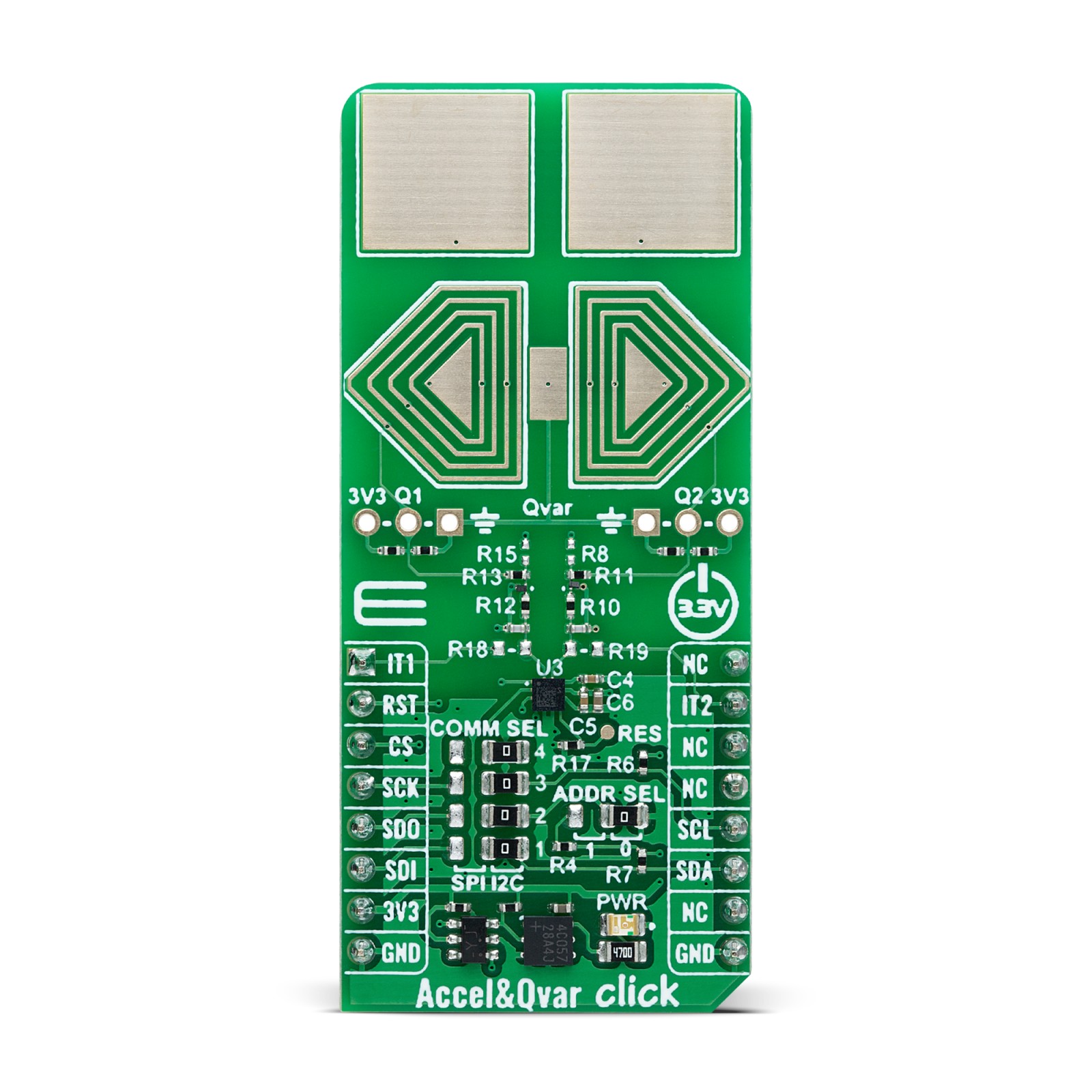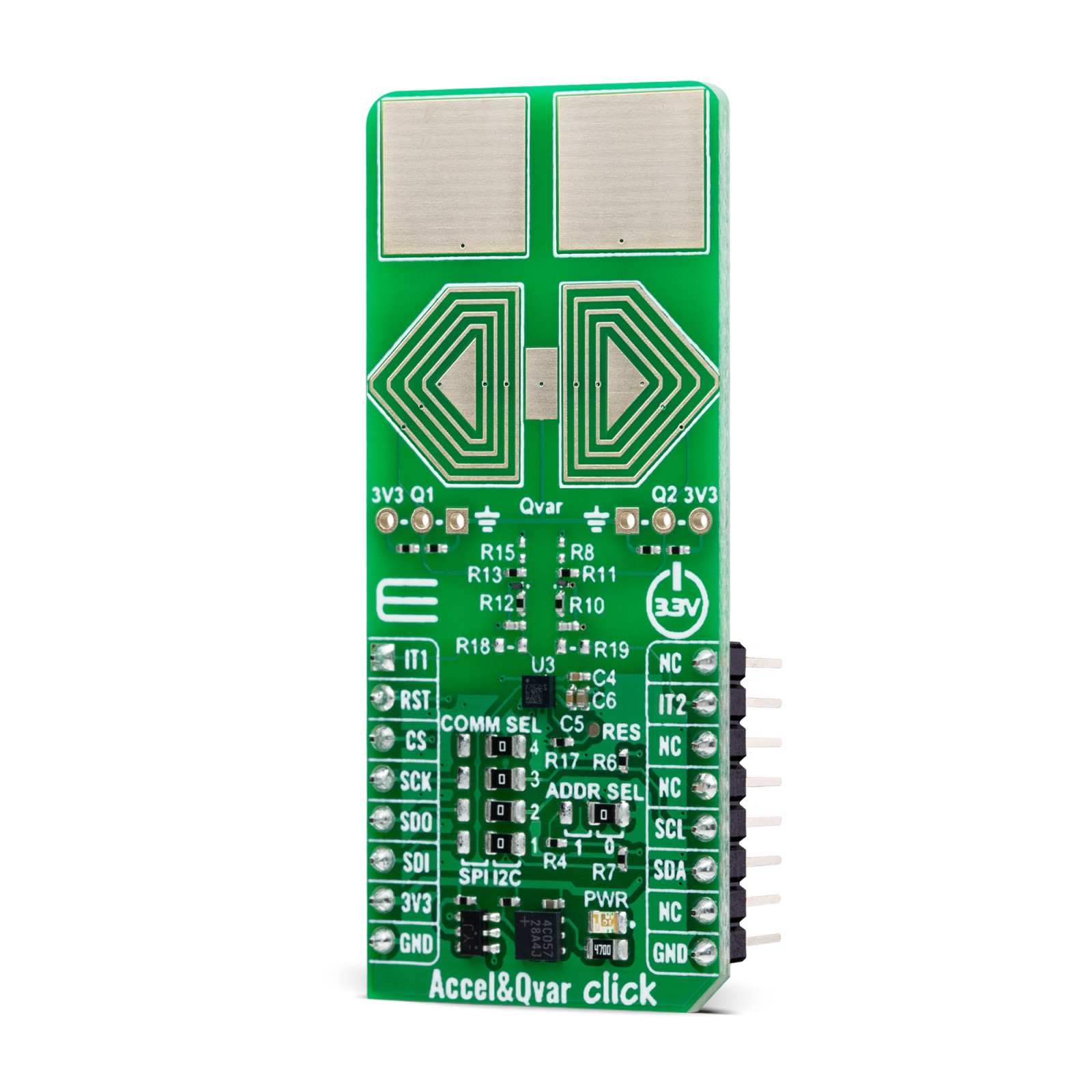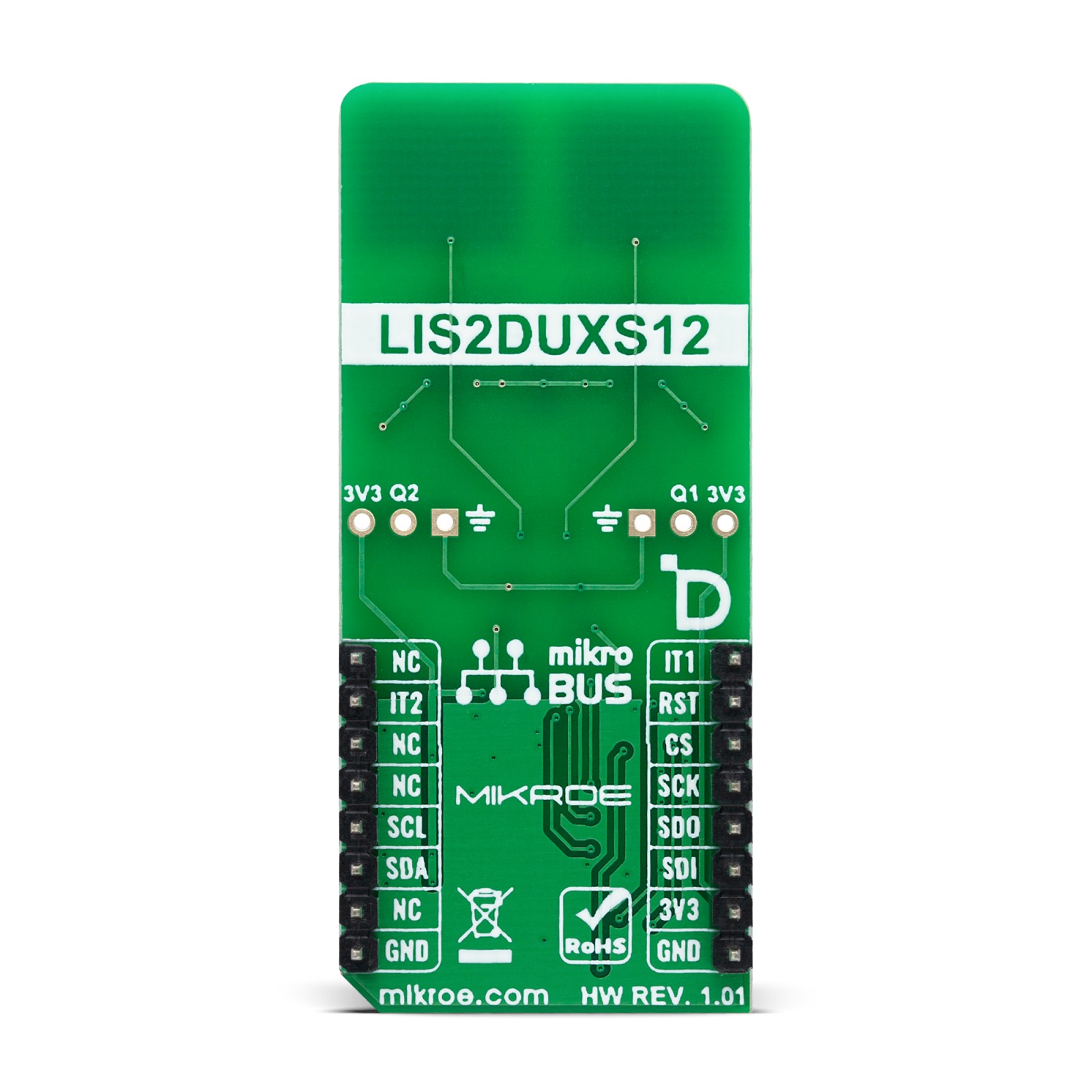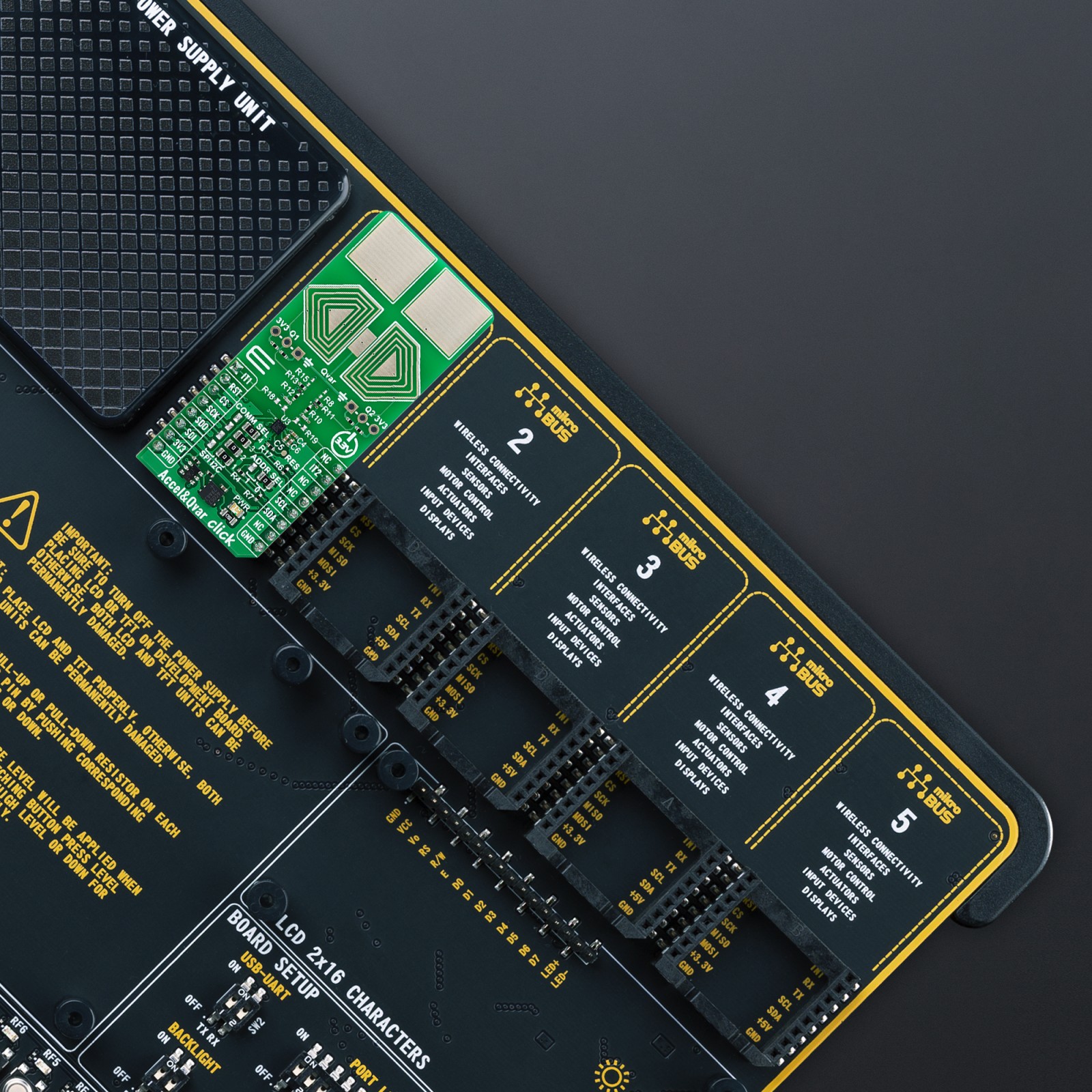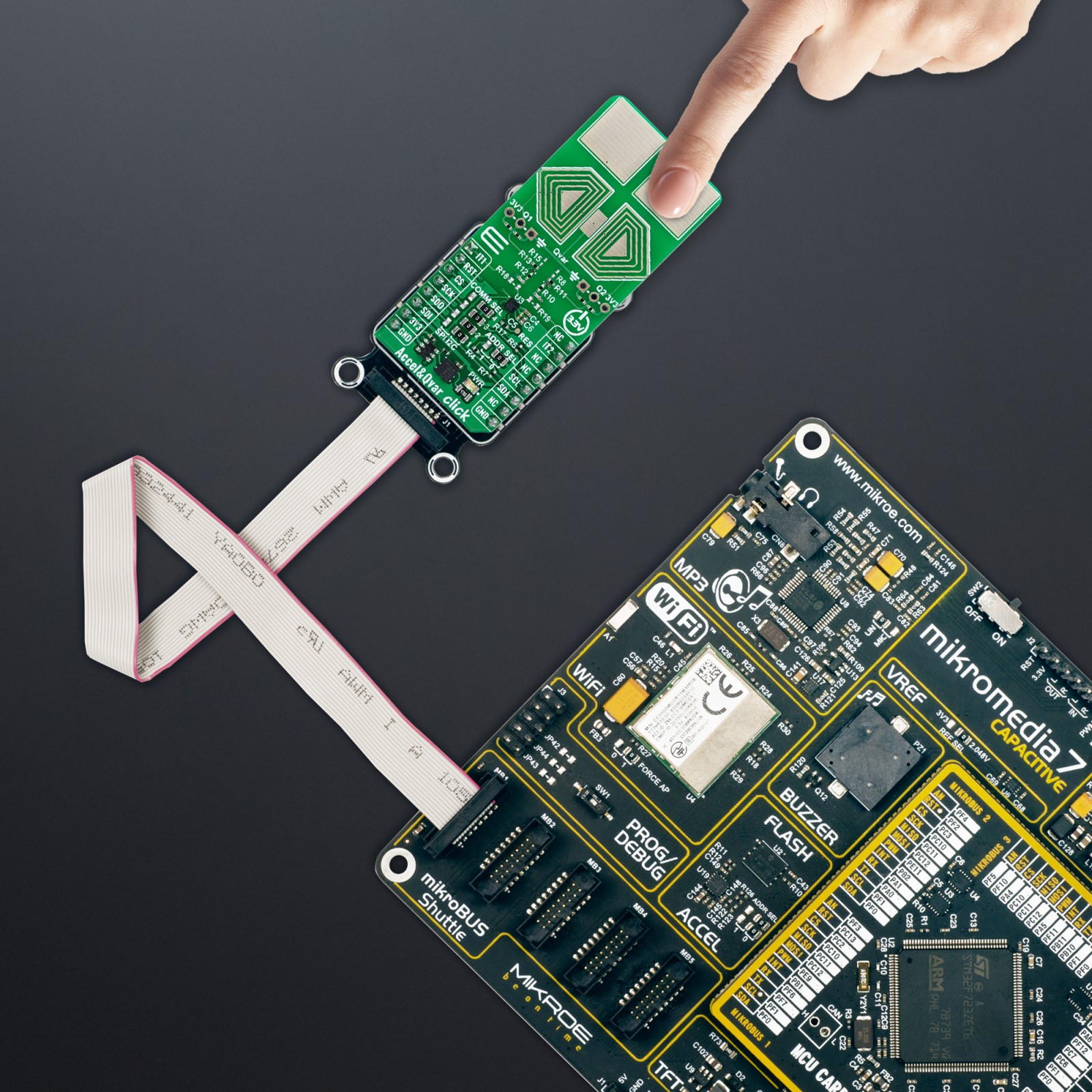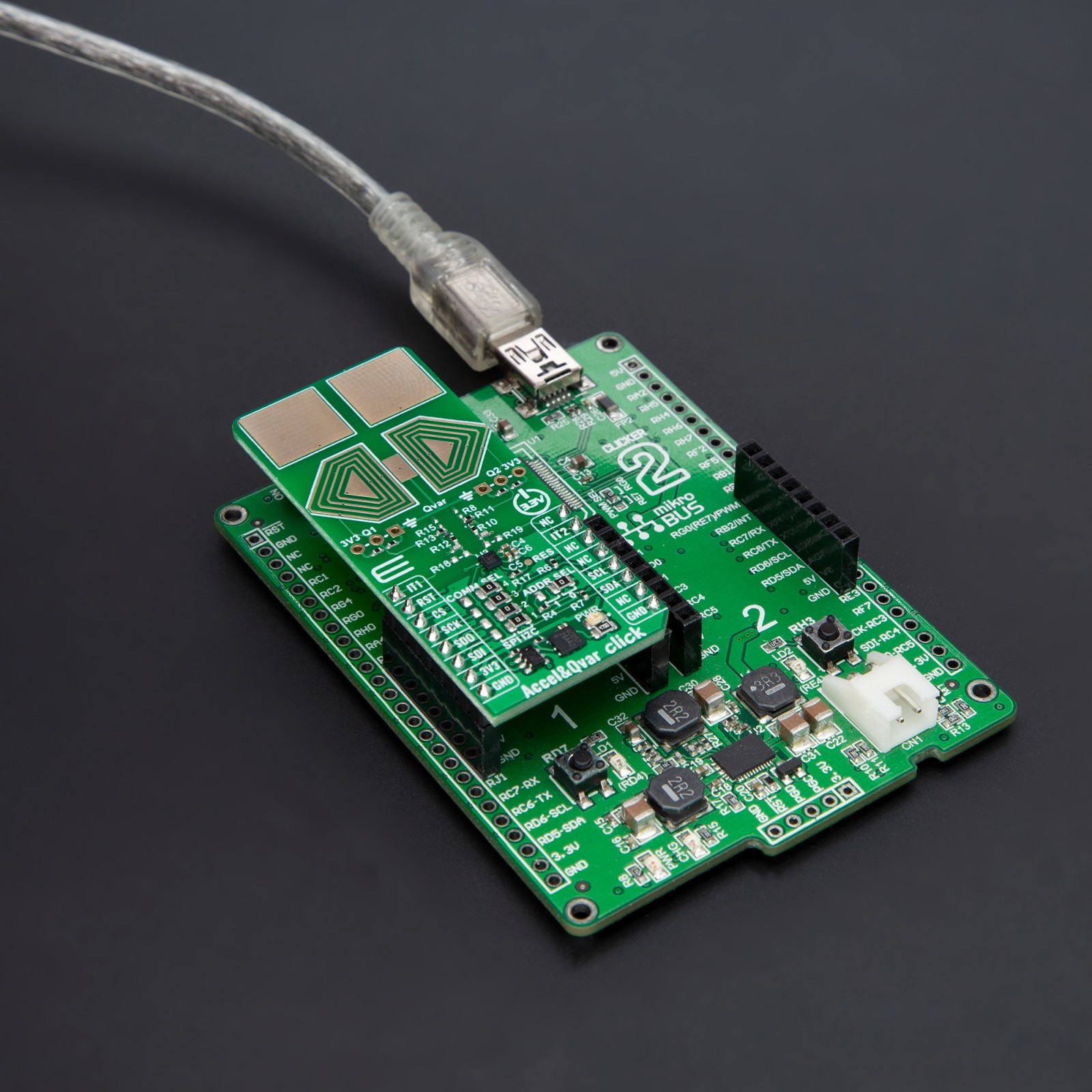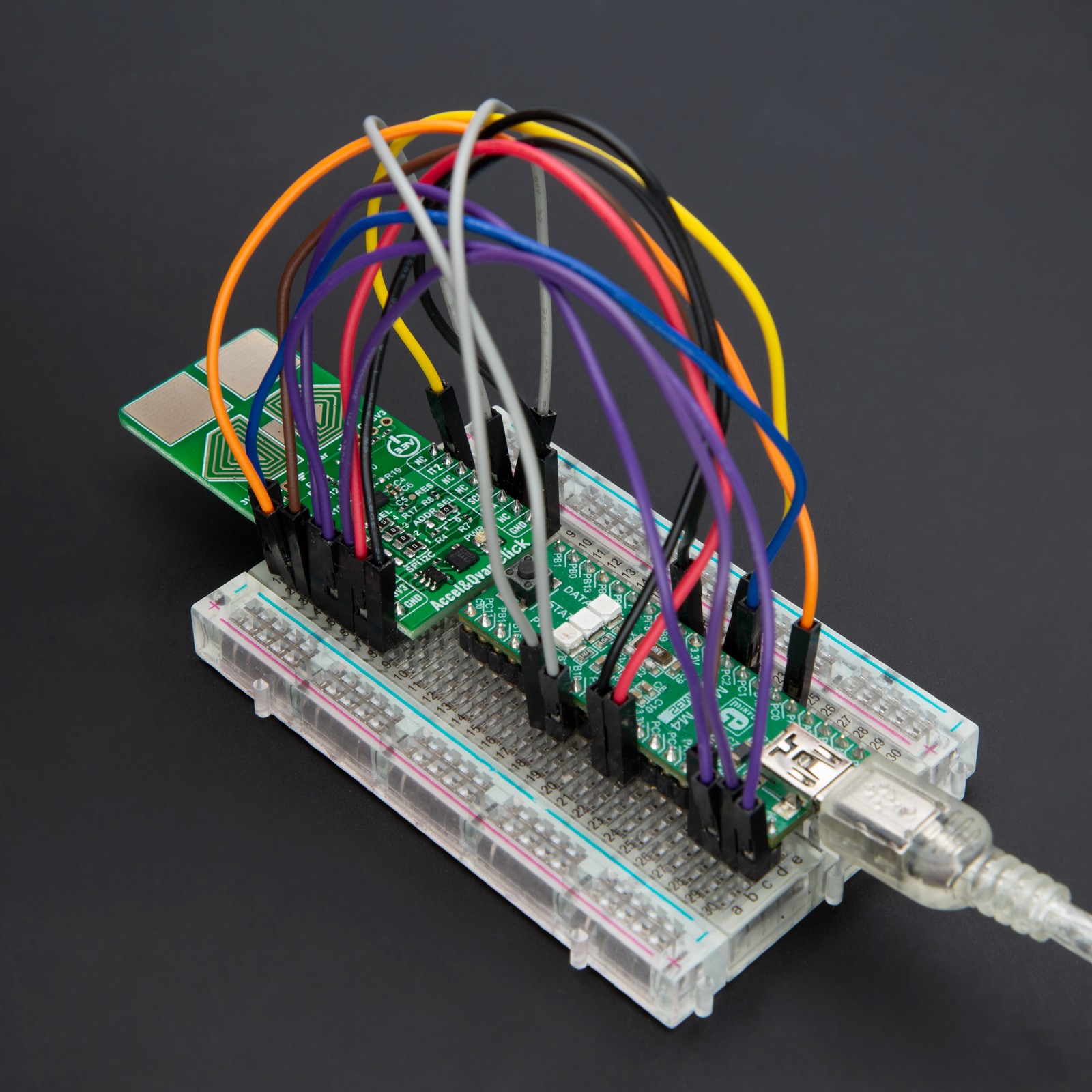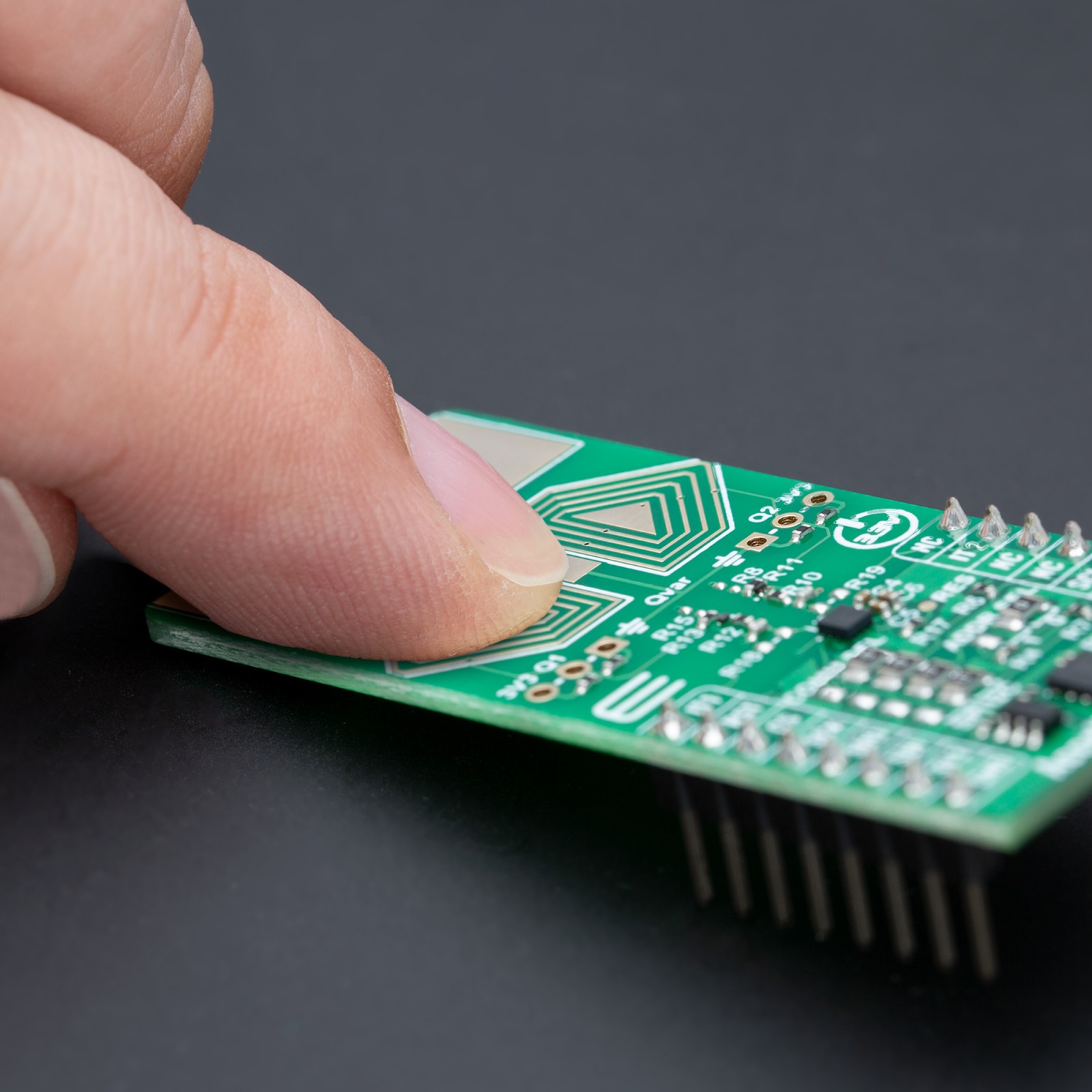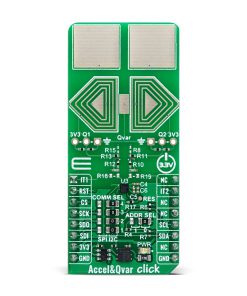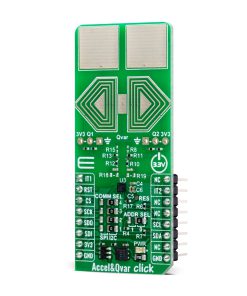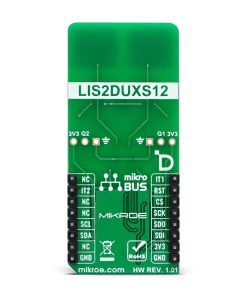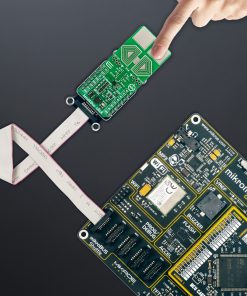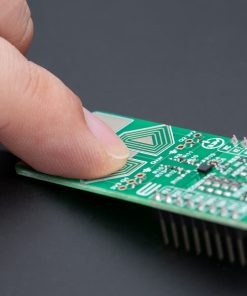Accel&Qvar Click
R425.00 ex. VAT
Accel&Qvar Click is a compact add-on board for capturing precise acceleration measurements and detecting electric charge variations. This board features the LIS2DUXS12, an ultralow-power accelerometer from STMicroelectronics. Besides low power consumption, it also includes Qvar technology, artificial intelligence, and an anti-aliasing filter. This digital, 3-axis accelerometer has adjustable full scales (±2g to ±16g), output data rates (1.6Hz to 800Hz), and multiple operating modes to serve various applications. Its unique Qvar sensor enhances user interaction through touch, press, and swipe detection. Ideally suited for wearable technology, portable healthcare devices, and motion-activated user interfaces, the Accel&Qvar Click offers unparalleled precision and flexibility for developers looking to innovate in smart devices and IoT applications.
Accel&Qvar Click is fully compatible with the mikroBUS™ socket and can be used on any host system supporting the mikroBUS™ standard. It comes with the mikroSDK open-source libraries, offering unparalleled flexibility for evaluation and customization. What sets this Click board™ apart is the groundbreaking ClickID feature, enabling your host system to seamlessly and automatically detect and identify this add-on board.
Stock: Lead-time applicable.
| 5+ | R403.75 |
| 10+ | R382.50 |
| 15+ | R361.25 |
| 20+ | R347.65 |

